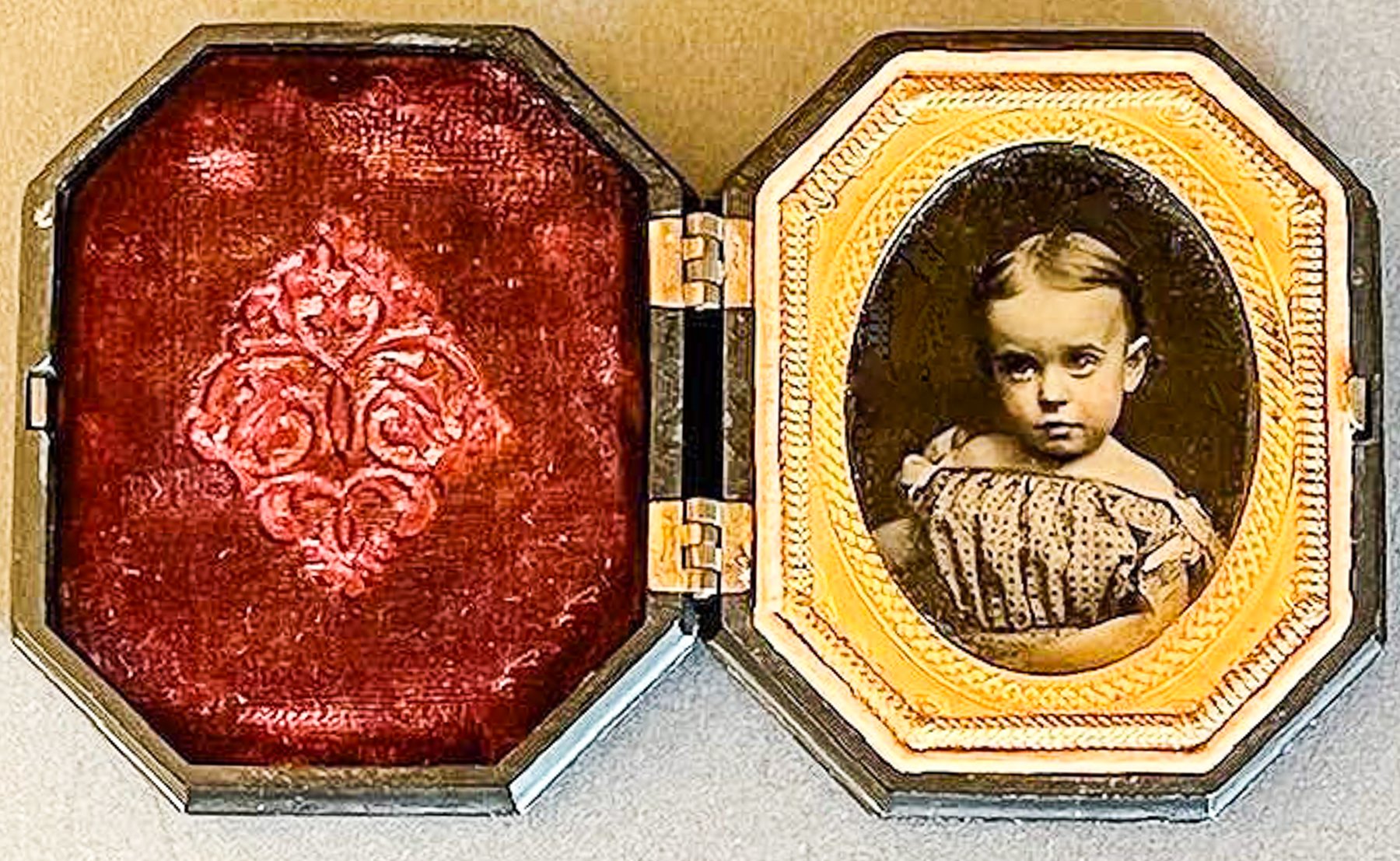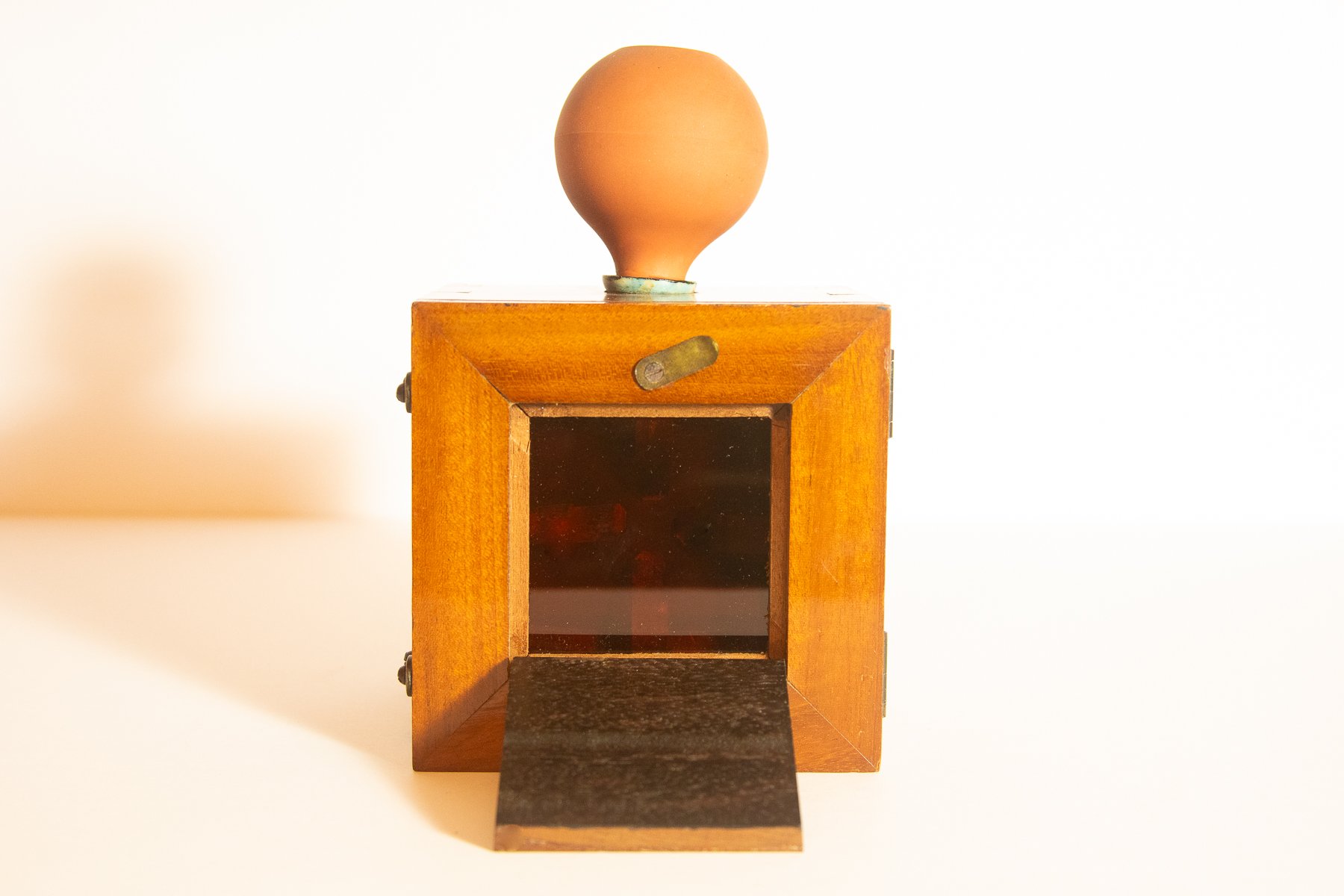Dubroni Apparatus No. 2
Maison Dubroni
Paris, France
ca. 1864
Dating from around 1864, at the height of the wet collodion era, the diminutive Dubroni offered a photographer the means to internally develop an image in the same apparatus in which it was exposed. The apparatus consists of a small wooden box camera with a ceramic container fitted inside. A glass plate was coated with iodized collodion and loaded into the camera. Then, using a pipette, silver nitrate was dripped onto the plate through an opening at the top of the camera. After taking the picture the plate remained inside the camera and developer was added. Finally, the exposed plate was washed with water, then removed from the camera for fixing the negative.
The name Dubroni is actually an anagram of the maker’s name, Bourdin. Legend has it that G. J. Bourdin, the Frenchman who made the camera, was forbidden by his father to have the family name associated with photography so he named his invention the Dubroni.










